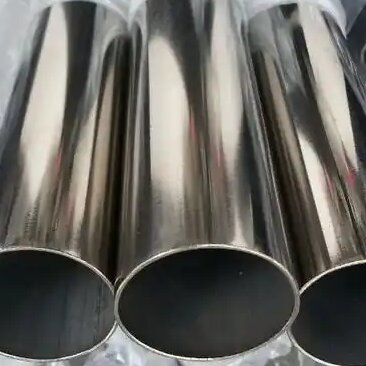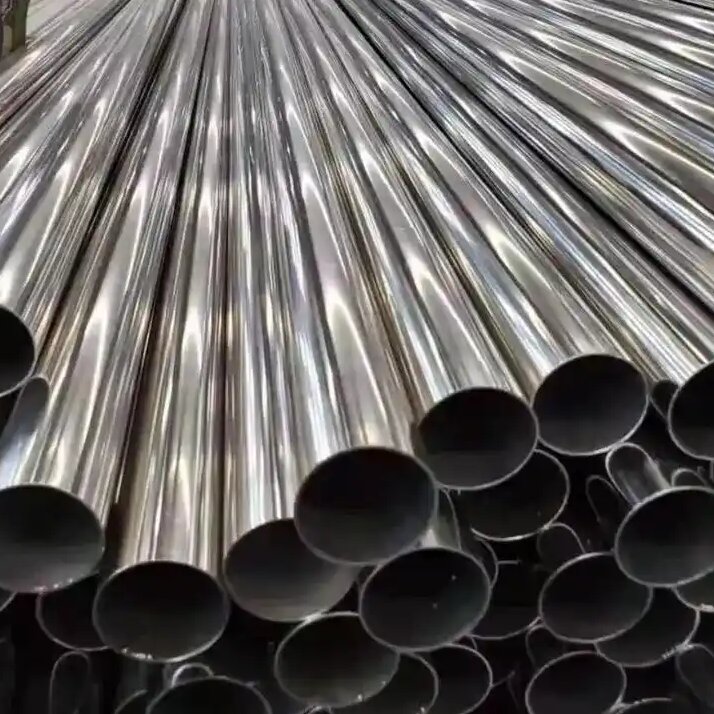The Difference Between Polishing, Brushing, and Electrolytic Finishing for Stainless Steel Pipes
Surface finishing plays a decisive role in the performance and appearance of stainless steel pipes. Among the most widely used methods are polishing, brushing, and electrolytic finishing. While all three aim to enhance surface quality-improving corrosion resistance, cleanliness, or visual appeal-their processes and applications differ significantly.
At Ganyeah Group, we provide tailored stainless steel pipe finishing solutions that align with customer requirements, from decorative to industrial applications.

Polished stainless steel pipe with mirror finish
1. Polishing: Smoothness and High Gloss
Process: Polishing uses mechanical grinding and buffing to remove surface defects such as scratches, oxidation, or uneven textures. Step-by-step grinding followed by polishing compounds can reduce surface roughness to Ra 0.02–0.8 μm, resulting in a bright, reflective finish.
Appearance & Feel:
- High-gloss or mirror-like finish, free of texture.
- Smooth to the touch, visually striking but sensitive to fingerprints.
Performance:
- Easy to clean and highly decorative.
- May temporarily reduce corrosion resistance unless followed by passivation.
Applications:
- Luxury and decorative settings such as hotel interiors, elevators, and furniture.
- Clean environments like food-grade pipelines, medical equipment, and kitchenware.

Brushed stainless steel pipe showing linear matte texture
2. Brushing: Texture and Durability
Process: Brushing involves controlled abrasive contact to create linear, directional textures on the stainless steel surface. The process produces a surface roughness of Ra 0.8–3.2 μm, adding depth and industrial character.
Appearance & Feel:
- Matte or semi-matte look with visible linear grain.
- Resistant to fingerprints and light scratches.
Performance:
- Durable, practical, and low-maintenance.
- Texture can trap dust, requiring directional cleaning.
Applications:
- Public and household settings such as handrails, cabinet panels, and household appliances.
- Industrial equipment and architectural metal finishes.

Electrolytic polishing stainless steel pipe
3. Electrolytic Polishing: Corrosion Resistance at Its Best
Process: Electrolytic polishing uses electrochemical reactions to dissolve surface irregularities and form a uniform Cr₂O₃ passive film. This enhances corrosion resistance significantly, creating a stable, smooth surface without mechanical stress.
Appearance & Feel:
- Uniform matte or soft gloss finish, free from mechanical lines.
- Even texture with improved consistency.
Performance:
- Exceptional corrosion resistance, ideal for aggressive environments.
- Resistant to stress corrosion cracking, easy to maintain.
Applications:
- Chemical pipelines, marine engineering, and nuclear applications.
- Pharmaceutical and food processing pipelines requiring hygiene and durability.
4. Comparison Table: Choosing the Right Finish
| Feature | Polishing | Brushing | Electrolytic Polishing |
|---|---|---|---|
| Process | Mechanical grinding & buffing | Directional abrasive friction | Electrochemical oxidation |
| Surface Roughness | Very low (Ra 0.02–0.8 μm) | Medium (Ra 0.8–3.2 μm) | Low (Ra 0.2–1.6 μm) |
| Appearance | Mirror-like, glossy | Matte with linear texture | Uniform matte/soft gloss |
| Key Advantage | Aesthetic, easy cleaning | Fingerprint-resistant, practical | Superior corrosion resistance |
| Corrosion Level | Moderate (needs passivation) | Moderate | Excellent (dense oxide film) |
| Applications | Decorative & hygienic industries | Household & public facilities | Harsh industrial & marine systems |
5. Ganyeah Group Recommendation
- For decorative and luxury applications: Choose polishing for its brilliant mirror-like effect.
- For daily use and durability: Brushed stainless steel pipes deliver practicality and style.
- For harsh environments: Electrolytic polishing ensures long-term resistance and reliability.
At Ganyeah Group, we don’t just supply stainless steel pipes-we deliver finishing solutions tailored to your project needs, ensuring both performance and aesthetics are met.
